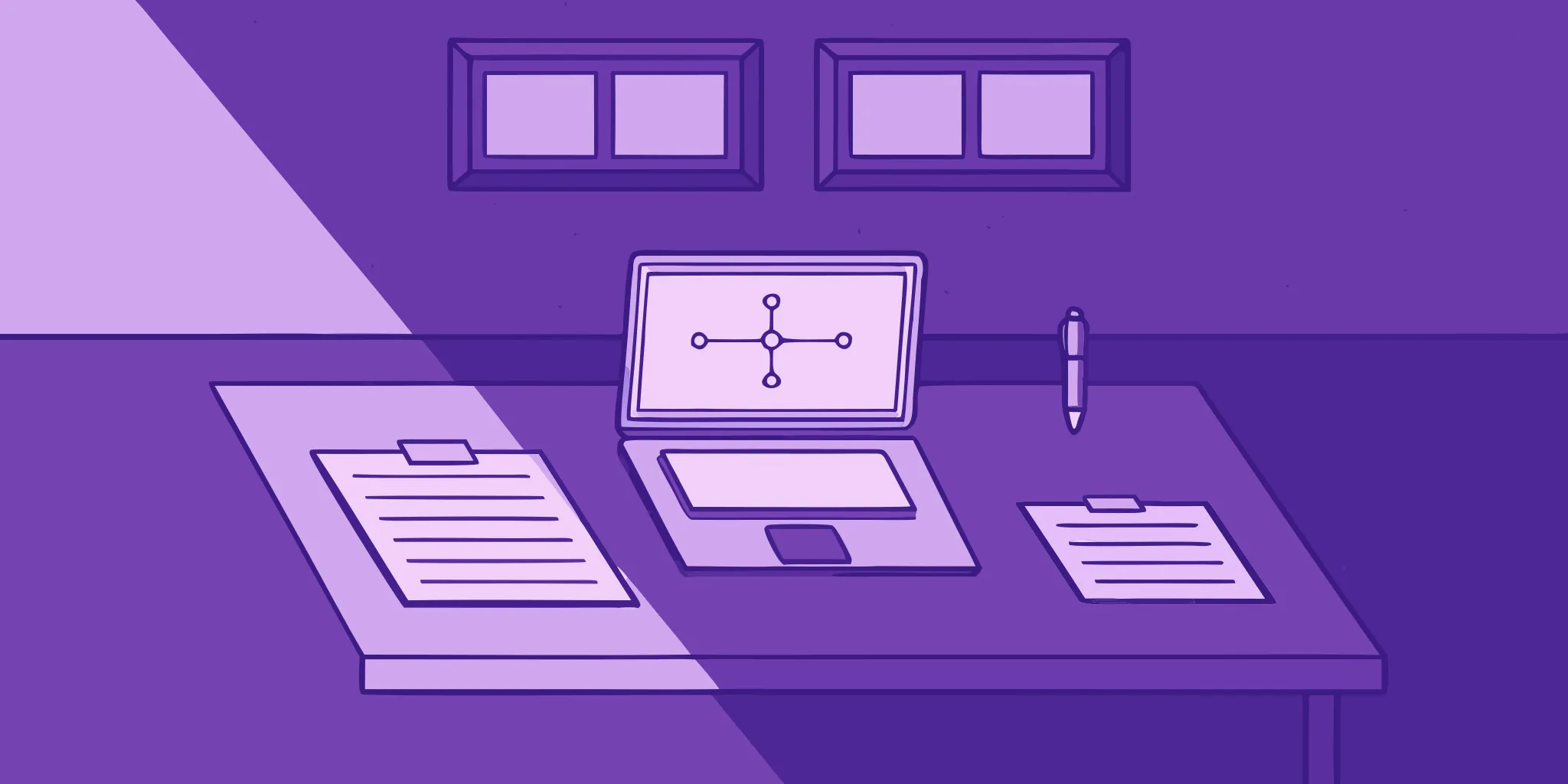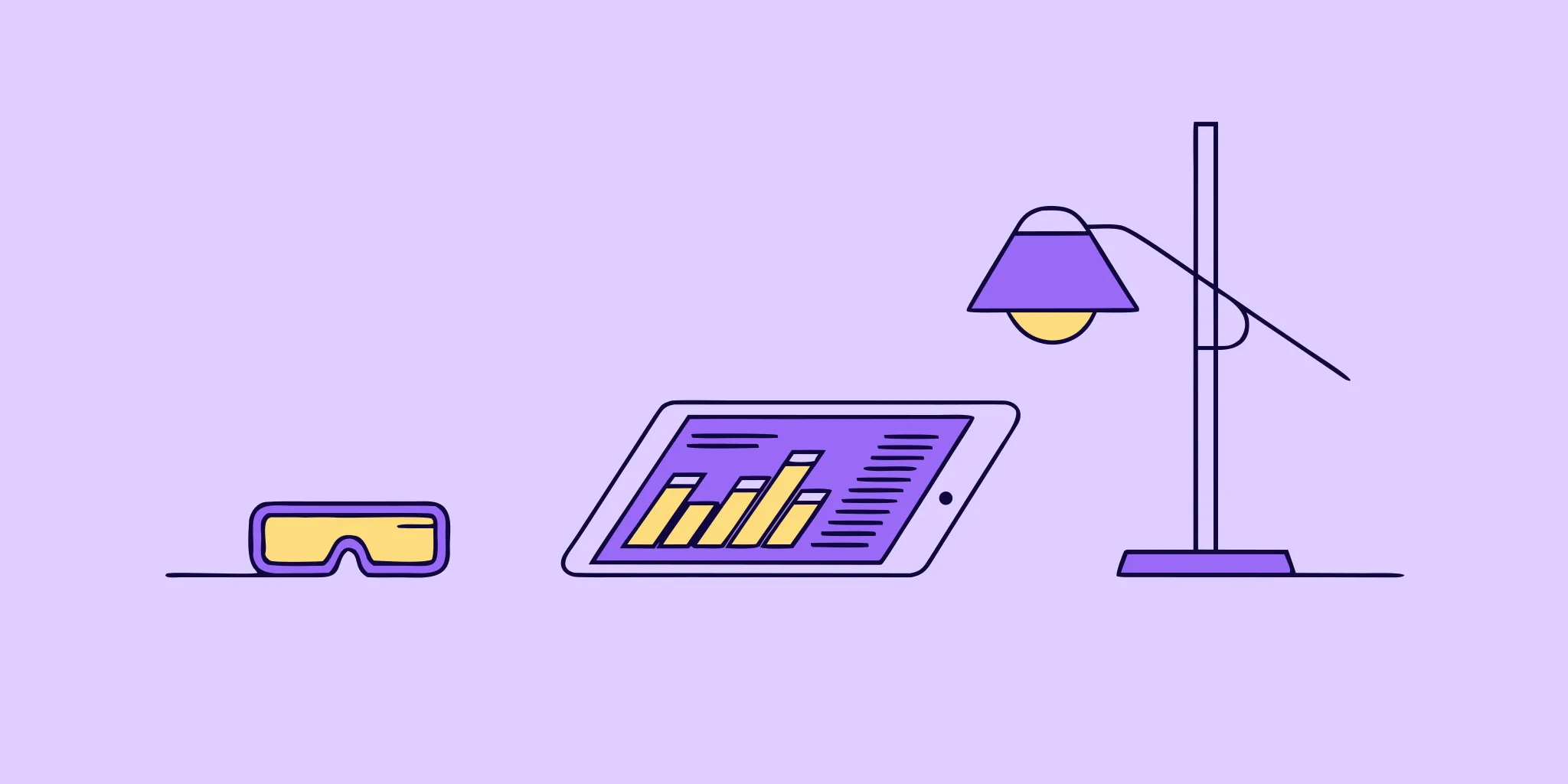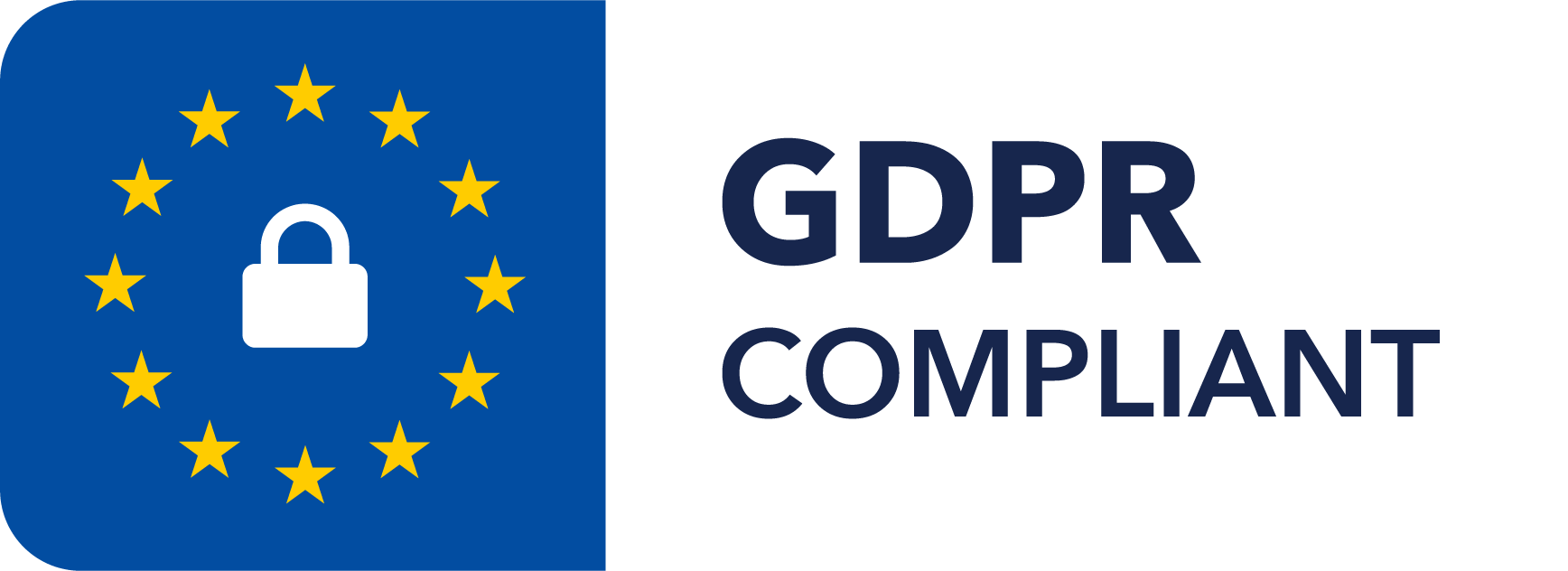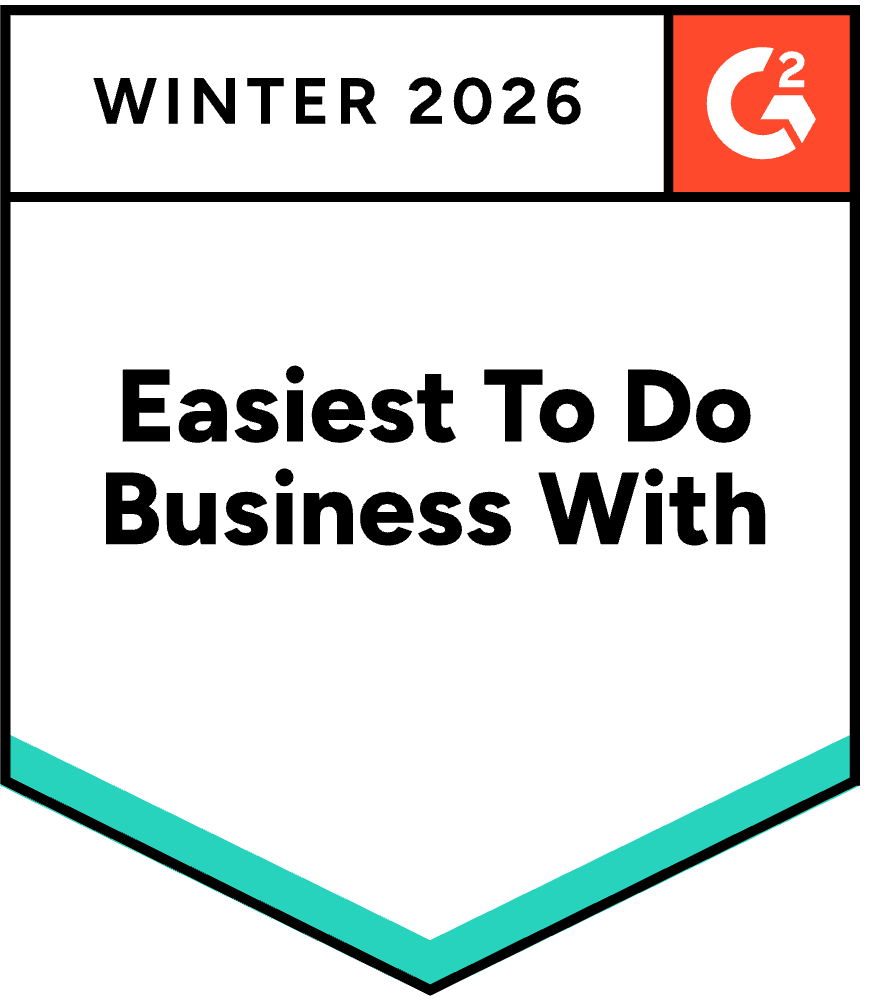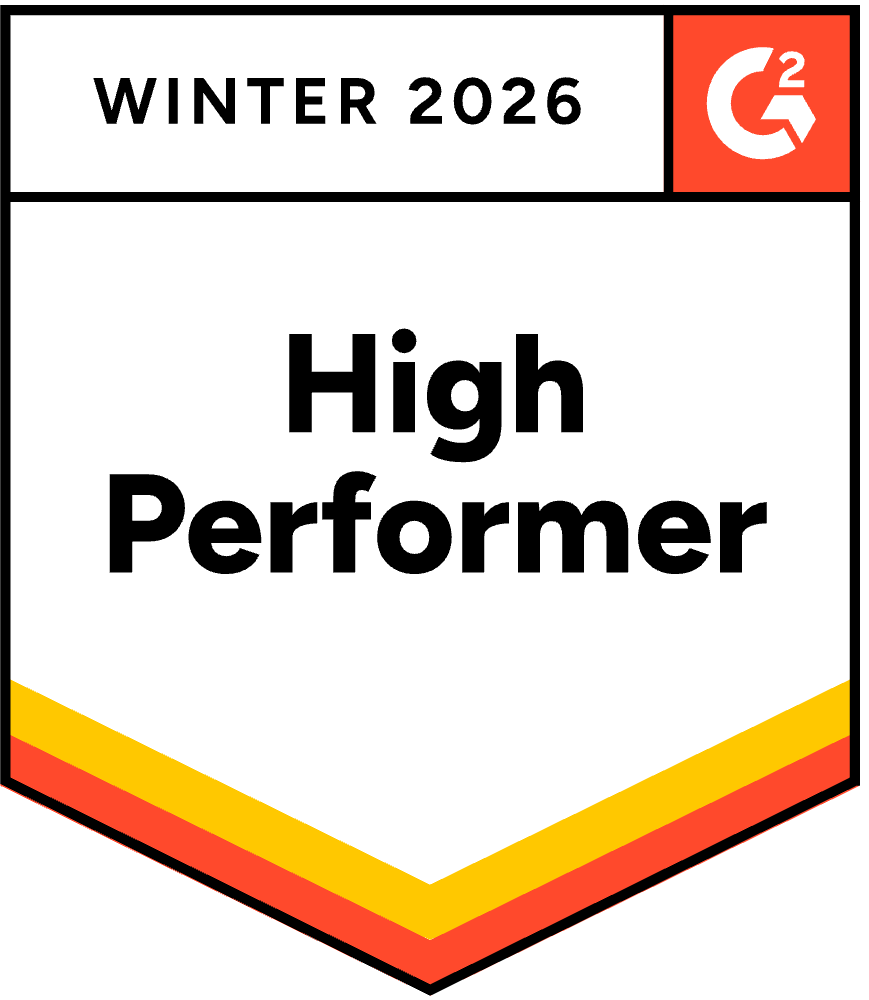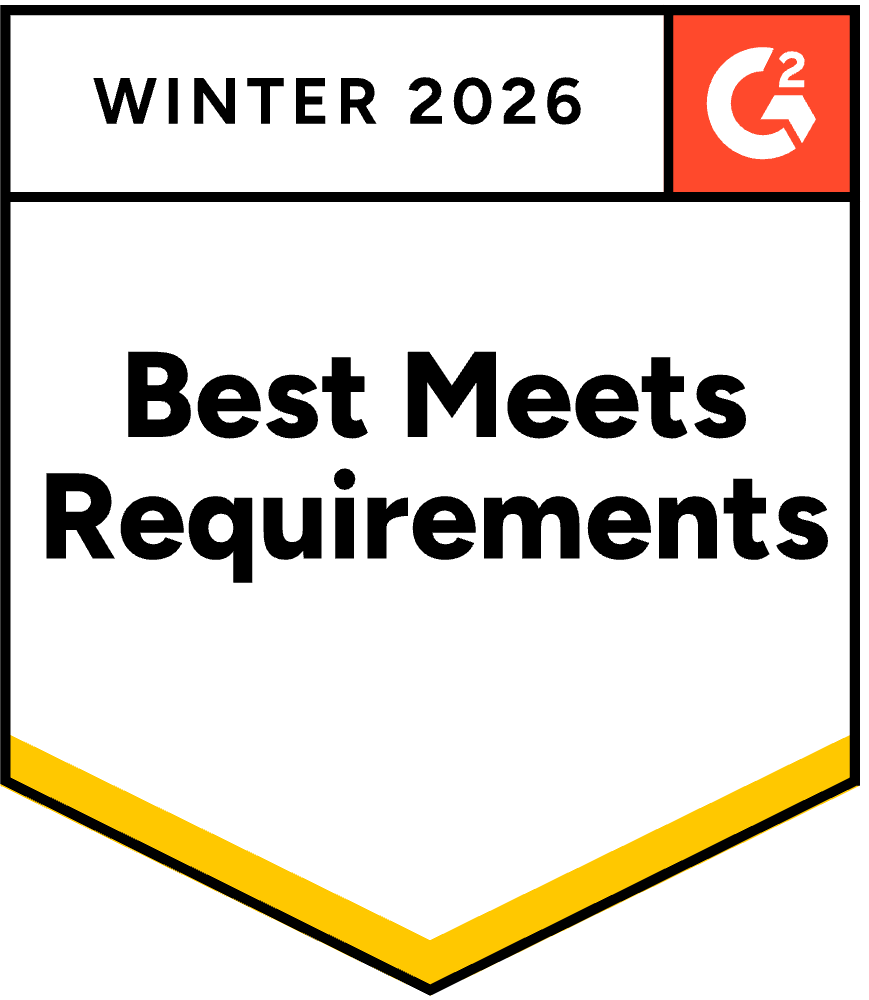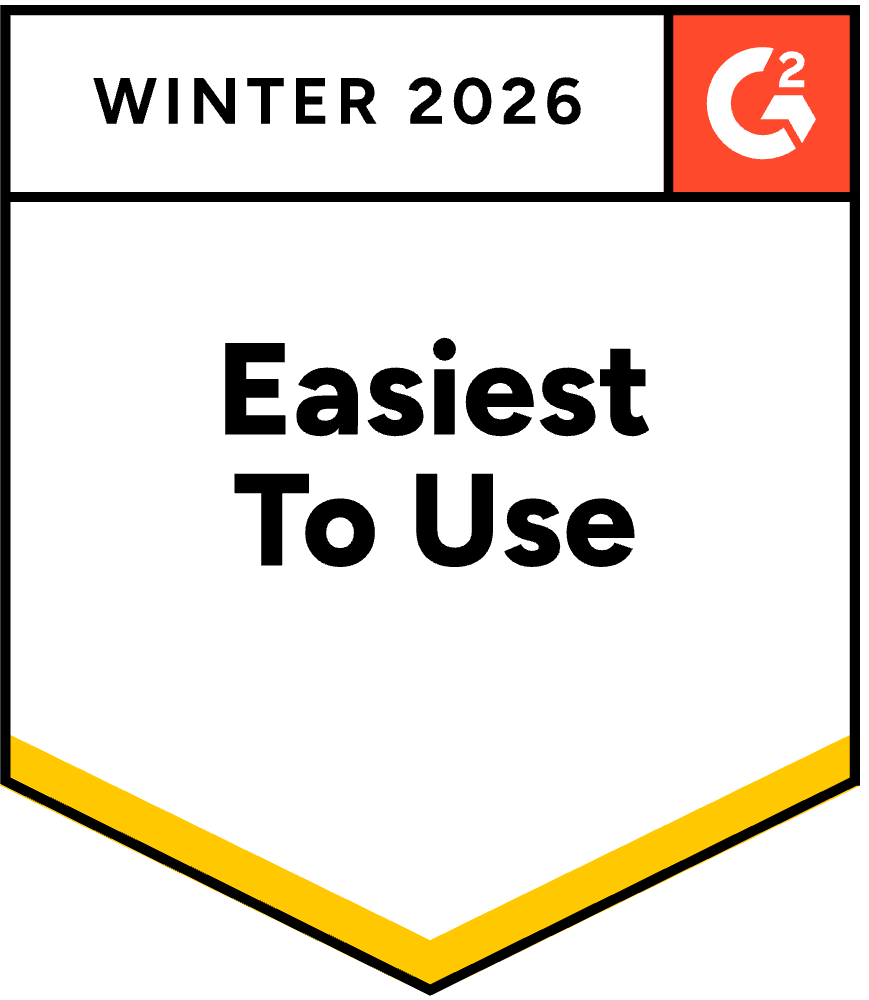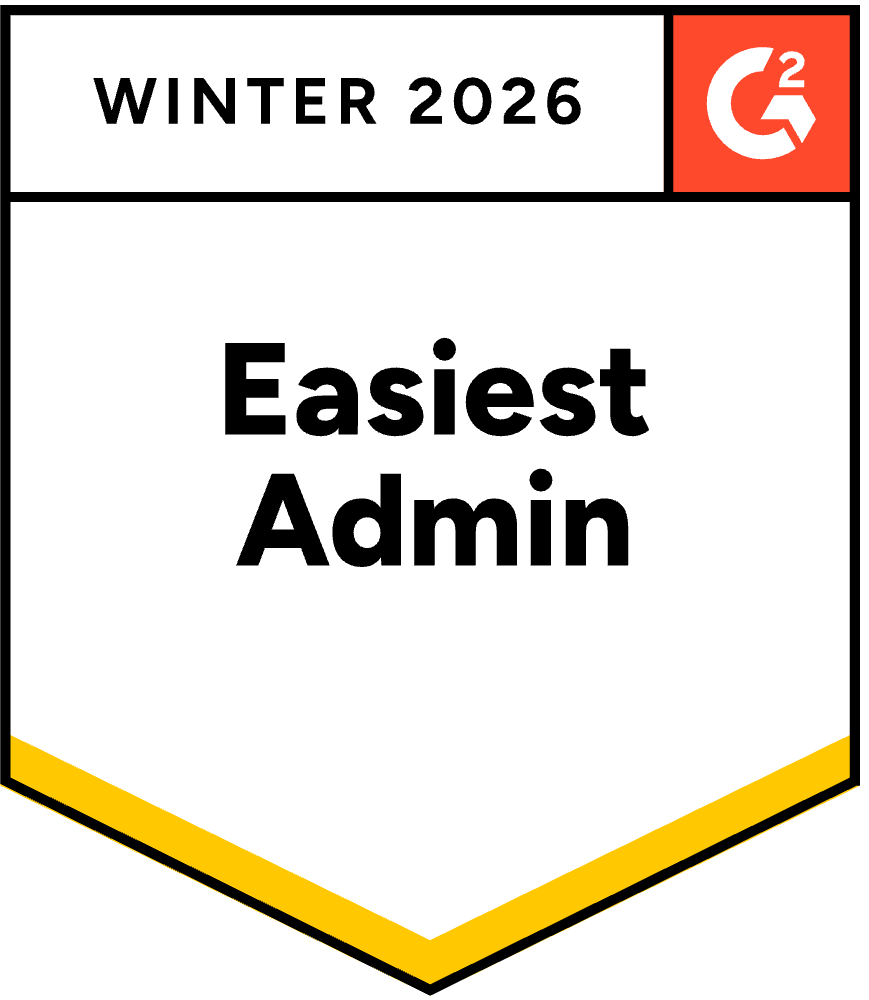AI Proposal Generators: Streamline Your Sales Process
August 13, 2025
By
Evie Secilmis
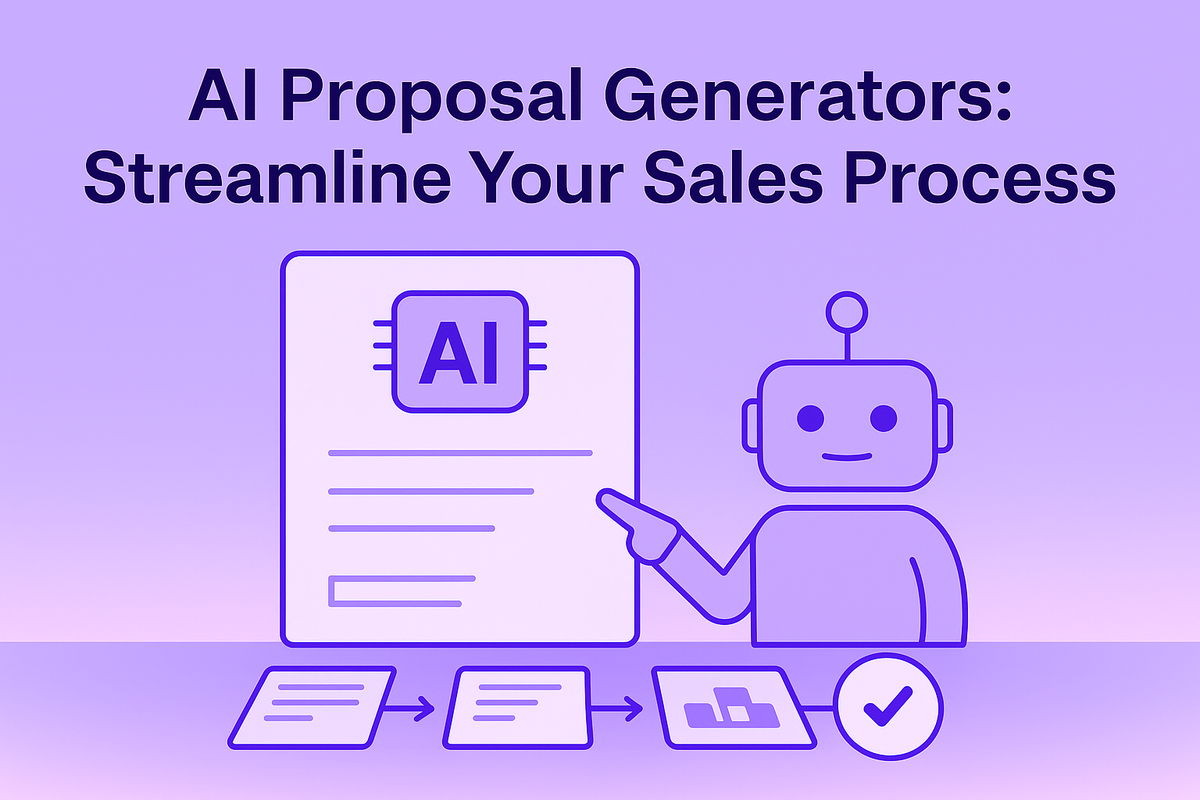
Let's cut through the hype around AI. What does it actually mean for your sales team's workflow? An ai proposal generator isn't a magic button that replaces human expertise. Think of it as a highly intelligent assistant for your entire team. It connects to your company’s collective knowledge—your best answers and case studies—to instantly assemble an accurate ai business proposal. This frees your team from the repetitive work of searching and formatting, so they can focus on tailoring the message and building a compelling narrative that wins deals. It’s about augmenting your team’s talent, not replacing it.
Key Takeaways
- Reclaim your team's time for strategic work: An AI proposal generator automates the tedious administrative tasks of finding information and formatting documents. This frees your sales team to focus on what truly matters: personalizing proposals, building client relationships, and winning more business.
- Choose a tool that solves your specific problems: The best AI generator is one that fits seamlessly into your existing workflow. Prioritize platforms with a centralized content library, robust integrations with your CRM, and enterprise-grade security to ensure it addresses your team's biggest proposal challenges.
- Combine AI efficiency with human expertise: The quality of your AI-generated proposals depends on the quality of your input. Ensure success by maintaining a clean, accurate content library and establishing a simple human review process. This partnership guarantees every proposal is both fast and flawless.
So, What Is an AI Proposal Generator?
If you’ve ever spent a weekend buried under a mountain of RFPs, you know the proposal process can be a grind. An AI proposal generator is a tool designed to change that. At its core, it uses artificial intelligence to automate and streamline how you create business proposals, responses, and other sales documents. Think of it as a smart assistant that handles the most tedious parts of the job, from finding the right information to formatting the final document.
Instead of starting from scratch every single time, an AI generator pulls from a central library of your best, most up-to-date content. It can instantly generate a first draft of an RFP response, a security questionnaire, or a statement of work. This isn't just about filling in blanks; a sophisticated AI deal desk learns from your past successes and helps you tailor each proposal to the specific client. The goal is to free up your time so you can focus on strategy and building client relationships, not just on paperwork. It’s about working smarter, moving faster, and putting your best foot forward on every single deal.
How AI Is Reinventing Your Proposal Process
Let's be honest: the traditional proposal process is broken. It’s slow, repetitive, and often feels like a guessing game. This is where AI completely changes the dynamic. It transforms proposal writing from a purely administrative task into a strategic advantage. By automating the heavy lifting, these tools significantly improve both the quality and the speed of your responses. Your team can collaborate more effectively because everyone is working from the same source of truth, ensuring consistency and accuracy.
Generative AI is more than just a content-writing shortcut. It’s a comprehensive solution that refines the entire proposal development process. It helps you find the most relevant answers, personalize content for each opportunity, and maintain brand voice across every document. This shift allows your team to spend less time searching for information and more time crafting a compelling narrative that wins deals.
The Rise of AI in Proposal Management
It feels like AI went from a futuristic concept to a daily headline overnight. For proposal teams, this isn't just noise; it's a fundamental shift in how we work. The adoption of AI in proposal management is moving quickly, and it’s already separating the teams that are keeping pace from those falling behind. This technology is no longer a 'nice-to-have' but a core component of a modern sales toolkit. It’s about giving your team the tools to respond faster, with more accuracy, and with a strategic edge that was previously impossible to achieve at scale. Let's look at how teams are actually putting these tools to work.
How Many Teams Are Using AI?
If you're wondering whether your competitors are using AI, the answer is likely yes. The move toward AI-powered proposal management is well underway, with recent data showing that 34% of proposal teams have already integrated these tools into their workflows. This isn't just a trend; it's a competitive advantage in action. These teams are primarily using AI to summarize complex information (61%), generate initial proposal drafts (44%), and edit content for clarity (43%). By automating these foundational tasks, they're able to allocate more time and brainpower to the high-value work that actually closes deals, like personalizing the narrative and building a stronger business case for their solution.
What Are the Most Common AI Use Cases?
AI is transforming the proposal process by acting as a powerful assistant, not a replacement for human insight. Its greatest strength lies in handling the time-consuming, repetitive tasks that bog down your experts. Think about all the hours spent searching for the right answer in old documents or reformatting content. AI automates that, allowing your team to focus on strategy. The best approach is to use AI to tackle one section at a time, ensuring you maintain full control over the final narrative. This combination of machine speed and human expertise is incredibly powerful; in fact, using AI can make your proposals up to 50% more effective by helping you create well-organized, impactful content that truly connects with your clients.
What to Look For in an AI Proposal Generator
When you start exploring AI proposal generators, it’s easy to get overwhelmed by all the options. To cut through the noise, focus on tools that automate the key parts of the proposal lifecycle: research, writing, and formatting. The right tool should do more than just generate text; it should be an active partner in building your proposal.
Look for a platform that allows for deep customization and integrates smoothly with your existing workflows. A tool that forces you to change your entire process is counterproductive. Instead, find one that connects with your CRM, cloud storage, and communication apps. The best AI proposal features will include a centralized content library, smart search functions, and analytics to track what’s working. This combination of automation and flexibility is what will truly make a difference for your team.
Why It's Time to Automate Your Proposals with AI
Making the switch from manual to AI-powered proposals is a game-changer for any sales team. The most immediate benefit is the incredible amount of time you get back. What used to take hours or even days can now be accomplished in minutes. This acceleration allows your team to respond to more opportunities without sacrificing quality. In fact, quality often improves because AI helps eliminate human error and ensures every proposal is built with the most accurate, approved information.
This efficiency has a ripple effect across the entire sales cycle. Faster, more accurate proposals lead to higher win rates and a more predictable pipeline. Businesses that adopt these tools find they can not only increase their deal volume but also improve the overall quality of their submissions. By moving away from manual methods, you empower your team to be more agile, strategic, and ultimately, more successful. Just look at the results other teams have seen after making the change.
Beyond Speed: Unique AI Advantages
While the speed of AI is what gets most of the attention, the real transformation happens in the details. Moving faster is great, but creating better, more consistent, and fairer proposals is what truly sets you apart. An AI generator brings a level of precision to your work that’s difficult to achieve manually, especially when deadlines are tight. It standardizes your messaging, ensures every proposal reflects your best work, and introduces some powerful advantages you might not have considered. It’s about more than just saving time; it’s about improving the fundamental quality and integrity of your sales documents.
Removing Unconscious Bias
We all have unconscious biases, and they can subtly find their way into our writing, potentially alienating a client without us ever realizing it. An AI proposal generator helps create a more level playing field. By drawing from a central library of approved, neutral language, the tool ensures your proposals are objective and inclusive. It focuses on the facts and the value you provide, stripping away accidental bias that could cloud your message. This practice helps ensure your proposals are judged solely on their merit, building trust and showing a high level of professionalism from the very first interaction.
Ensuring Copyright-Free Content
When your team is scrambling to pull a proposal together, it can be tempting to grab text or images from various sources without checking the fine print. This can create a serious legal risk if you accidentally use copyrighted material. A good AI proposal generator solves this problem by creating content from your own proprietary information. The proposals it generates are yours to use for any business purpose, as you own the copyright for the final document. This gives your team peace of mind, knowing they can share, publish, and adapt their proposals without worrying about future legal complications.
5 Best AI Business Proposal Generators to Try
Finding the right AI tool can feel like a huge task, but it doesn't have to be. The best generator for your team depends on what you need to accomplish, from responding to complex RFPs to sending simple, beautifully designed sales proposals. Some tools are built for speed, others for security, and some for creating visually stunning interactive documents. The key is to match the tool’s strengths with your team’s specific challenges and goals. To help you find the perfect fit, here’s a look at some of the top contenders in the market.
1. HeyIris.ai
If your team regularly tackles complex documents like RFPs, RFIs, and security questionnaires, Iris is built for you. It’s more than just a proposal writer; it’s an AI-powered deal desk that connects to your systems and proactively flags outdated information, ensuring every response is accurate. Iris shines by generating high-quality first drafts in a fraction of the time, which helps your team handle a higher volume of deals and improve win rates. The platform is designed to be your single source of truth, making it a powerful asset for sales teams focused on efficiency and precision.
2. Proposify
Proposify is fantastic for teams that want to create professional, branded proposals without a long turnaround time. Its free AI Proposal Generator is designed to get you from a blank page to an impressive proposal in minutes. This tool is all about speed and consistency, helping you maintain your brand’s look and feel across every document you send. If you find your team spending hours or even days on proposals, Proposify aims to cut that down significantly, so you can focus more on selling and less on document creation.
3. PandaDoc
PandaDoc is a well-rounded document workflow tool that covers everything from proposal creation to electronic signatures. Its AI features help you generate and customize proposals, contracts, and quotes quickly. With a large library of templates, you can get started right away and tailor documents to your specific needs. PandaDoc also offers powerful analytics, allowing you to track when a client opens, views, and signs your proposal. It’s a great all-in-one solution for teams looking to manage their entire document lifecycle in one place.
4. RFPIO
RFPIO is a leader in the response management software space, built to handle the complexities of RFPs, RFIs, and security questionnaires. It uses AI to create a centralized answer library, making it easy for your team to find and import approved content into new responses. The platform is designed for collaboration, allowing multiple team members to work on a single document simultaneously. If your organization responds to a high volume of detailed information requests, RFPIO provides the structure and automation needed to do it effectively.
5. Loopio
Loopio is another strong contender in the RFP response world, and it approaches AI with a focus on quality and security. The team at Loopio acknowledges that free AI generators can pose risks, so their platform is built to provide reliable, accurate content you can trust. It excels at automating the tedious parts of responding to questionnaires by building and maintaining a smart content library. This is a great tool for teams that need to produce high-quality, consistent responses while ensuring their data remains private and secure.
Must-Have Features in Your AI Proposal Tool
When you start looking at AI proposal generators, you'll notice they all promise to make your life easier. But what does that actually mean in practice? The right tool does more than just spit out text; it becomes a core part of your sales workflow. To make a smart choice, you need to look past the marketing hype and focus on the specific features that will actually help your team close more deals. Think of it as building a toolkit—you want the most effective and reliable instruments for the job. Let's break down the must-have features to look for.
Instantly Generate and Customize Content
The main draw of an AI proposal tool is speed. You need a platform that can take your initial thoughts, key points, or even old documents and generate a solid first draft in minutes, not hours. This is where the real time-saving happens. But speed without control is useless. The best tools, like Iris, also give you the power to easily customize every part of the proposal. You should be able to tweak the tone, add specific client details, and ensure the final document is perfectly tailored to the opportunity. It’s about combining AI’s efficiency with your team’s expertise.
Tap into a Library of Templates and Designs
A winning proposal needs to look as good as it reads. A great AI tool will come with a library of professional, well-designed templates that you can use as a starting point. This saves you from the dreaded blank page and ensures a polished, consistent look across all your documents. Look for a platform that allows you to customize these templates with your own branding—your logo, color palette, and fonts. This reinforces your brand identity and makes your proposals instantly recognizable. The goal is to create impressive, on-brand documents without needing a graphic designer for every bid.
Automate Branding and Design
Your proposal is a direct reflection of your company, and brand consistency is non-negotiable. The best AI tools understand this and don't force you into a generic, one-size-fits-all look. Instead, they should allow you to easily automate your branding across every document. Look for a platform where you can set your company’s logo, color palette, and fonts as the default. This ensures that every proposal your team sends out is instantly recognizable and professional. It eliminates the risk of someone going rogue with weird fonts or old logos, reinforcing your brand identity with every submission. This feature saves countless hours of formatting and guarantees a polished final product every time.
Create Interactive and Dynamic Elements
A proposal doesn't have to be a static, boring PDF. The right AI generator should be an active partner in helping you build a more engaging and persuasive document. Think beyond just text and images. A modern proposal can include embedded videos, interactive pricing tables, or links to detailed case studies. This transforms your proposal from a simple document into an immersive experience for the client. Look for a tool that allows for this kind of deep customization and integrates smoothly with your other content sources. This is your chance to make your proposal stand out from the stack of documents on your client's desk and show them you understand their needs on a deeper level.
Simplify Team Collaboration and Workflows
Proposals are rarely a solo effort. Your AI tool should function as a central hub where your entire team can work together seamlessly. Look for features like real-time commenting, version control, and clear approval workflows. This eliminates the chaos of emailing drafts back and forth and ensures everyone is on the same page. Some platforms also include features like electronic signatures to speed up the final approval process. When your team can collaborate effectively, you not only produce better proposals but also get them out the door much faster.
Measure Your Success with Built-in Analytics
How do you know if your proposals are actually hitting the mark? Guesswork isn't a strategy. A top-tier AI tool will have built-in analytics that give you real-time insights into how prospects are interacting with your documents. You should be able to see who opened the proposal, when they opened it, and which sections they spent the most time on. This data is gold. It helps you understand what content resonates with clients, allowing you to refine your templates and follow up with more informed, timely conversations. It’s a simple way to use data to directly improve your win rates.
Connect with the Tools You Already Use
Your proposal software shouldn't live on an island. To be truly effective, it needs to connect with the other tools your team relies on every day. Look for a platform that offers robust integrations with your CRM (like Salesforce or HubSpot), cloud storage, and other essential business software. A seamless integration means you can pull client data directly into your proposals, sync updates automatically, and keep your entire sales process connected. This eliminates tedious manual data entry, reduces the risk of errors, and creates a much smoother workflow for your team.
Ensure Your Data Stays Secure and Compliant
You're handling sensitive information in every proposal, from your company's pricing to your client's project details. Because of this, security is non-negotiable. Your chosen AI tool must have strong security protocols, including data encryption and secure access controls, to protect this information. It’s also critical to ensure the platform complies with major data privacy regulations like GDPR and CCPA. A trustworthy provider will be transparent about their security practices and how they handle your data, giving you and your clients peace of mind.
How to Handle Common AI Proposal Challenges
Switching to an AI proposal generator is a game-changer, but let's be real—it’s not always a simple plug-and-play solution. Like any powerful tool, it comes with a learning curve and a few potential hurdles. The good news is that these challenges are completely manageable with a bit of foresight and the right strategy. Thinking through them ahead of time will save you headaches down the road and ensure your team gets the most out of your new software.
From making sure your proposals still sound like you to keeping your sensitive data safe, there are a few key areas to watch. You’ll want to consider how the tool integrates with your current systems, how you’ll manage the cost, and, most importantly, how you’ll get your team excited and ready to use it. By tackling these common challenges head-on, you can create a smooth transition and start seeing a return on your investment almost immediately.
How to Get High-Quality, Relevant AI Output
The most common fear about AI is that it will produce generic or inaccurate content. The truth is, the quality of your AI-generated proposal depends entirely on the quality of the data you give it. Think of it as a brilliant new hire: you need to provide them with the right information to do their job well. Before you even start, take the time to clean up your existing content library. This means regularly reviewing and sanitizing your data for inaccuracies, outdated statistics, and biases.
A great AI tool will act as your partner in this. For instance, the HeyIris.ai platform is designed to proactively flag information that might be out of date across your systems. Even with the best AI, always have a human review the final draft. This quality control step ensures every proposal is polished, accurate, and perfectly tailored to the client.
Keeping Your Brand Voice Consistent with AI
Your brand voice is your company’s personality, and you don’t want to lose it to a robot. Thankfully, you don’t have to. Modern AI proposal generators are sophisticated enough to learn and replicate your unique tone. The key is to train them properly. Start by feeding the AI your best-performing proposals, marketing materials, and style guides. This gives it a rich dataset to learn from.
Many tools can also create templates that automatically incorporate your branding, like your logo, color palette, and fonts. This ensures visual consistency from the get-go. By providing clear examples and establishing brand guidelines within the tool, you can guide the AI to produce content that sounds authentic and reinforces your brand identity in every proposal you send. It’s less about replacing your voice and more about scaling it.
Tackling Data Privacy and Security Head-On
Handing over sensitive business and client information to a third-party platform can feel risky. Data privacy is one of the biggest challenges businesses face with AI, so it’s crucial to choose a provider you can trust. Before committing to a tool, do your homework on its security measures. Ask questions like: Where is my data stored? Is it encrypted? Will my information be used to train public AI models?
Look for platforms that are transparent about their data privacy practices and comply with recognized standards like SOC 2. A trustworthy provider will offer enterprise-grade security features to protect your information and your clients'. This isn't just about compliance; it's about building a foundation of trust that allows your team to use the tool with confidence.
Using General AI Tools vs. Specialized Software
It can be tempting to turn to free, general AI tools to get a quick start on a proposal. They’re great for brainstorming or getting past a tough case of writer's block. As one expert notes, it's often best to use AI to write one section at a time rather than the whole document at once. However, when you're dealing with high-stakes business proposals, the risks of using a general-purpose tool often outweigh the benefits. These platforms lack the context, security, and specialized features needed for professional sales documents. A specialized tool, on the other hand, is built specifically for the proposal process, drawing from your own secure content library to ensure every output is accurate, on-brand, and safe.
Why You Shouldn't Share Sensitive Data
When you input information into a public AI model, you often have no control over where that data goes or how it’s used. Many of these tools use your prompts to train their models, which means your confidential company information or sensitive client details could become part of their knowledge base. For any business, security is non-negotiable. A trustworthy AI tool must have strong security protocols, including data encryption and secure access controls, to protect this information. This is where specialized software provides peace of mind. Platforms like Iris are designed as closed systems, ensuring your proprietary data remains yours and yours alone.
The Importance of Fact-Checking
General AI models are trained on vast amounts of internet data, which means they can sometimes generate plausible-sounding but incorrect information, often called "hallucinations." This makes human oversight absolutely essential. You should always assume that AI-generated content needs to be checked by a human expert. Take the time to verify every fact, figure, and detail before it goes to a client. While specialized tools that pull from your own curated content library significantly reduce this risk, a final human review is always a smart final step to ensure quality and accuracy. This partnership between AI efficiency and human expertise is what creates a flawless final document.
How to Avoid Plagiarism
Another risk with general AI tools is that they can sometimes produce content that is too similar to their training data, creating potential plagiarism issues. You don't want your proposal to accidentally include text from a competitor's website or a copyrighted article. To be safe, you should always run any text generated by a public AI through a plagiarism checker to ensure it's original. This is a problem that specialized proposal software solves from the start. Since these platforms build responses using your company’s own approved content library, the output is inherently original to your business, eliminating the risk of unintentional plagiarism.
Making Sense of Complex System Integrations
An AI proposal tool is most powerful when it works seamlessly with the other software you rely on every day. If your team has to constantly switch between windows or manually transfer data from your CRM to your proposal generator, you’ll lose many of the efficiencies you were hoping to gain. A smooth workflow depends on solid integrations.
Before you start shopping, map out your team’s current tech stack. Make a list of your must-have integrations, whether it’s Salesforce, HubSpot, Slack, or Google Drive. When evaluating different AI tools, prioritize those that offer robust, pre-built connections to the systems you already use. Finding a provider with the right integration capabilities will guarantee a much smoother transition and help your team work more effectively from day one.
How to Manage Your Budget and Costs
Implementing any new software comes with a price tag, and AI tools are no exception. It’s important to view this as an investment in your team’s productivity and success, not just another line item on your expense report. The right tool should deliver a clear return by dramatically reducing the time spent on proposals and helping you improve your win rates.
When comparing options, look for transparent pricing models that align with your needs, whether it’s a per-user fee or a usage-based plan. Many providers offer free trials or demos, which are great for testing the software and building a business case. You can also check out case studies to see the tangible results other companies have achieved. This will help you justify the cost and show how the tool will ultimately pay for itself.
Getting Your Team Excited About a New Tool
You can have the best AI tool in the world, but it won’t do you any good if your team doesn’t use it. Implementing new technology can bring up emotional challenges like a fear of change or uncertainty about new workflows. The key to overcoming this is to focus on the human side of the transition. Start by clearly communicating why you’re making the change and how it will benefit each person on the team.
Provide comprehensive employee training and create easy-to-follow documentation. Designate a few tech-savvy team members as internal champions who can offer support to their peers. Most importantly, create a feedback loop where your team can share what’s working and what isn’t. This not only helps you refine your process but also makes your team feel valued and involved in the success of the rollout.
How to Pick the Right AI Proposal Tool for Your Team
With so many options on the market, picking the right AI proposal tool can feel overwhelming. The best choice for your team depends on your specific challenges, workflow, and goals. Let’s walk through the key steps to find a tool that not only fits your needs but also helps your team win more deals.
Start by Defining Your Team's Needs
Before you even look at a demo, start with a clear picture of what you need to solve. What are your biggest proposal-related headaches? Is it the time it takes to write a first draft? Is it keeping information consistent and accurate? Or is it making your proposals look professional without a designer on standby?
An AI proposal generator uses artificial intelligence to automate and streamline the creation of business proposals. Think of it as a smart assistant that can build a draft by pulling information from your content libraries, ensuring every proposal is accurate and on-brand. Get your team together and make a list of your must-haves versus your nice-to-haves. This simple exercise will give you a clear scorecard for evaluating different tools and prevent you from getting distracted by flashy features you’ll never use.
Pinpoint Your Must-Have Features
Once you know what you need, you can start looking at features. The best tools do more than just fill in a template. A top-tier AI proposal generator analyzes your content and suggests visually appealing designs that make your proposals easier to read and more engaging. It should feel like having a writer, editor, and designer all in one platform.
Look for a solution with a centralized content library that your entire team can access. This is where your tool will pull approved answers, case studies, and product descriptions from, saving countless hours of searching through old documents. The goal is to find a tool that helps you create high-quality, customized proposals quickly. Check out the features that leading platforms offer to get a sense of what’s possible, from instant generation to collaborative workflows.
Compare Pricing Models (and Find the Best Value)
Budget is always a factor, and AI proposal tools come with a variety of pricing structures. Some platforms charge a flat monthly fee, while others use a per-user model. For example, some plans might start at a set price per user per month, which can be great for small teams but might get expensive as you grow.
When comparing costs, think about the total value, not just the sticker price. A cheaper tool that requires a lot of manual work isn't a great deal. Consider your team’s size and how many proposals you send each month. Ask vendors for clear pricing tiers and find out what’s included in each one. Does the price include onboarding and support? Are there limits on the number of proposals or users? A little research here will save you from surprise costs down the road.
Look for Free Trials
You wouldn't buy a car without a test drive, so don't commit to new software without trying it first. Most reputable AI proposal tools offer a free trial or a live demo, and you should absolutely take advantage of it. This is your chance to get a real feel for the platform and see if it actually solves your team’s biggest challenges. A trial period is the perfect opportunity to test the user interface, see how well it integrates with your existing systems, and gauge the quality of the AI-generated content.
This trial period is also the perfect time to build a business case for the investment. Track how much time your team saves on a sample proposal to show decision-makers the clear ROI. Free trials are great for testing the software, and you can also check out case studies to see the tangible results other companies have achieved. This combination of hands-on experience and proven success stories will make your decision much easier and more informed.
Consider Freemium Options
Some AI proposal generators offer a "freemium" model, which gives you access to a basic version of the tool for free, forever. This can be a great starting point for freelancers or very small teams with simple needs, like sending straightforward sales proposals. It allows you to get comfortable with the software and its core functions without any financial commitment. However, it's important to understand the limitations of these free plans.
Freemium versions often lack the advanced features that growing teams need, such as robust integrations, enterprise-grade security, and the ability to handle complex RFPs. The best generator for your team depends on what you need to accomplish, from responding to complex RFPs to sending simple, beautifully designed sales proposals. If your goal is to create visually stunning documents quickly, a freemium tool might work. But if you need a powerful, secure solution for managing detailed questionnaires and high-stakes bids, you’ll likely need to invest in a paid plan.
Make Sure It Integrates with Your Tech Stack
Your AI proposal tool shouldn't live on an island. To get the most out of it, it needs to connect seamlessly with the other software you use every day. A smooth sales process depends on your tools talking to each other, so integrations are non-negotiable.
Make a list of your essential software, like your CRM (think Salesforce or HubSpot), cloud storage (like Google Drive or SharePoint), and communication tools (like Slack or Microsoft Teams). The right AI platform will integrate with these systems to pull customer data, sync files, and notify your team automatically. This eliminates the need to constantly switch between tabs, reduces manual data entry, and ensures everyone is working with the most up-to-date information.
Don't Forget to Check for Customer Support
Finally, consider the human element. When you adopt a new tool, you’re also starting a relationship with the company behind it. What does their customer support look like? A great product with poor support can quickly become a source of frustration.
Look for a vendor that offers comprehensive onboarding to get your team up and running smoothly. Check what their ongoing support includes—can you reach them by phone, email, or chat? Do they have a knowledge base with helpful articles and tutorials? Some teams even work with IT specialists to handle updates and maintenance, but a good software provider should offer robust support as part of their service. This partnership is key to making sure you get the most out of your investment long-term.
Ready to Start? Here’s How to Use Your New AI Tool
You’ve chosen your AI proposal generator—that’s a huge step! Now, the real fun begins: weaving it into your team’s daily rhythm. A great tool is only as powerful as the team using it, so a thoughtful rollout is key to getting those amazing results you’re looking for. Think of it less as a launch and more as a new, smarter way of working together. Here’s how you can make the transition seamless and successful from day one.
Set Up a Clear Implementation Plan
Jumping in without a plan can get messy. The best way to integrate a new tool is to follow a structured approach. Start by mapping out how the AI generator will fit into your current proposal process. Identify who will be responsible for managing the tool, who needs training, and what your key milestones are for the first 30, 60, and 90 days. A clear implementation plan ensures everyone knows their role and helps you introduce automation without disrupting your workflow. This roadmap will be your guide to a smooth and predictable transition.
Customize the Tool to Match Your Workflow
Your proposal tool should feel like it was made for you. Take the time to customize it with your company’s branding—your logo, colors, and fonts. This ensures every proposal that goes out looks and feels distinctly yours. Beyond aesthetics, set up custom templates for the different types of documents you create, like RFPs, SOWs, or security questionnaires. Many tools, including Iris, allow you to build a central library of pre-approved content, which the AI uses to generate drafts. This initial setup makes the proposal creation process faster and more consistent down the line.
Mastering Your AI Prompts and Edits
Getting the best results from your AI proposal generator is a partnership. It’s not about hitting a button and hoping for the best; it’s about learning how to guide the tool effectively. This comes down to two key skills: crafting clear, detailed prompts and performing a thoughtful, strategic edit. When you master this process, you combine the speed of AI with the irreplaceable expertise of your team. The result is a proposal that’s not just fast, but also smart, personalized, and compelling. Think of the AI as your co-pilot—it handles the complex calculations and navigation, but you're still the one steering the ship and making the critical decisions.
How to Write an Effective Prompt
The quality of your AI-generated proposal is a direct reflection of the quality of your input. Think of your AI tool as a brilliant new hire—it’s incredibly capable, but it needs clear direction and good source material to do its job well. The best way to get a great output is to train the AI properly from the start. Feed it your best-performing proposals, your most effective marketing materials, and your brand style guide. Modern AI is sophisticated enough to learn and replicate your unique tone, but only if you give it a rich dataset to learn from. This initial effort pays off by ensuring the AI’s first drafts already sound like you.
What to Look for When Editing
Even with the most advanced AI, a final human review is non-negotiable. This isn’t just about catching typos; it’s your quality control step to ensure the proposal is perfectly tailored to the client and the opportunity. As you edit, check for accuracy, tone, and consistency with your brand voice. Most importantly, look for opportunities to add a personal touch or a strategic insight that only a human can provide. The AI handles the heavy lifting of assembling the right information, which frees you up to focus on the narrative. This is how you combine AI efficiency with human expertise to create a final document that is both flawless and persuasive.
Create a Simple Quality Control Process
AI is a fantastic assistant, but it’s not meant to run on autopilot without any oversight. The real magic happens when human expertise and AI efficiency work together. Since the AI pulls information from your content library, your first step is ensuring that library is filled with vetted, accurate, and up-to-date information. This is your single source of truth. Then, create a simple review process. Every AI-generated draft should get a quick but thorough look-over from a team member to catch any nuances the AI might have missed and add a final human touch. This quality control process guarantees your proposals are always accurate and polished.
Train Your Team for an Easy Transition
For your team to embrace a new tool, they need to feel confident using it. Schedule dedicated training sessions that go beyond just the basic features. Show them how the tool solves their specific pain points, whether it’s cutting down research time or eliminating repetitive data entry. Encourage questions and create a space for open feedback. It helps to identify a few "champions" on your team who can become go-to experts for their peers. When your team understands how the tool helps them win, they’ll be excited to make it part of their workflow.
Track Performance and Adjust as You Go
Your implementation plan doesn't end once the tool is live. To make sure you're getting the most out of your investment, you need to track its impact. Keep an eye on key metrics like proposal creation time, team collaboration efficiency, and, of course, your win rates. Check in with your team regularly to gather feedback on what’s working and what could be better. This ongoing evaluation allows you to make small adjustments to your process or the tool’s configuration, ensuring you continue to see significant improvements in speed and quality over time.
Related Articles
- Best AI Proposal Assistant Software: A Complete Guide
- AI RFP Automation for Enterprise Sales
- 10 Ways to Use AI for Better Bid Writing
Frequently Asked Questions
Will an AI proposal generator make my job obsolete? Not at all. Think of it as a powerful assistant, not a replacement. These tools are designed to handle the most repetitive and time-consuming parts of proposal writing, like searching for approved answers and formatting documents. This frees you up to focus on the high-value work that actually wins deals—like tailoring the narrative to the client, building a stronger business case, and strengthening relationships. It augments your expertise, allowing you to be more strategic and efficient.
Can't I just use a general AI tool like ChatGPT to write my proposals? While general AI tools are great for brainstorming, using them for professional proposals introduces serious risks. They can invent incorrect information, and you have no control over how your sensitive company or client data is used. A specialized AI proposal generator, on the other hand, is a secure, closed system. It builds proposals using your own vetted and approved content library, which ensures the information is accurate, on-brand, and completely confidential.
How do I make sure the AI-generated content actually sounds like my company? Your brand voice is unique, and a good AI tool will help you scale it, not erase it. The key is to provide the AI with high-quality examples of your best work. By training it on your winning proposals, marketing materials, and brand style guides, the platform learns to replicate your specific tone and style. A final human review is always essential to add that perfect finishing touch and ensure the proposal feels personal and authentic.
Is it really secure to upload our confidential sales information to an AI platform? This is a critical question, and the answer depends on the platform you choose. Reputable, enterprise-grade AI proposal generators are built with security as a top priority. Look for tools that offer features like data encryption, secure access controls, and compliance with standards like SOC 2. Unlike public AI models, these specialized platforms are designed to keep your proprietary information private and will never use your data to train other models.
What's the single most important factor for getting great results from an AI proposal tool? The success of any AI tool comes down to the quality of the information you give it. The most crucial step is to create and maintain a clean, accurate, and up-to-date content library. This becomes your single source of truth that the AI draws from. When you combine a high-quality content library with a simple human review process for every final draft, you create a powerful partnership that guarantees every proposal is both fast and flawless.
Share this post
Link copied!



